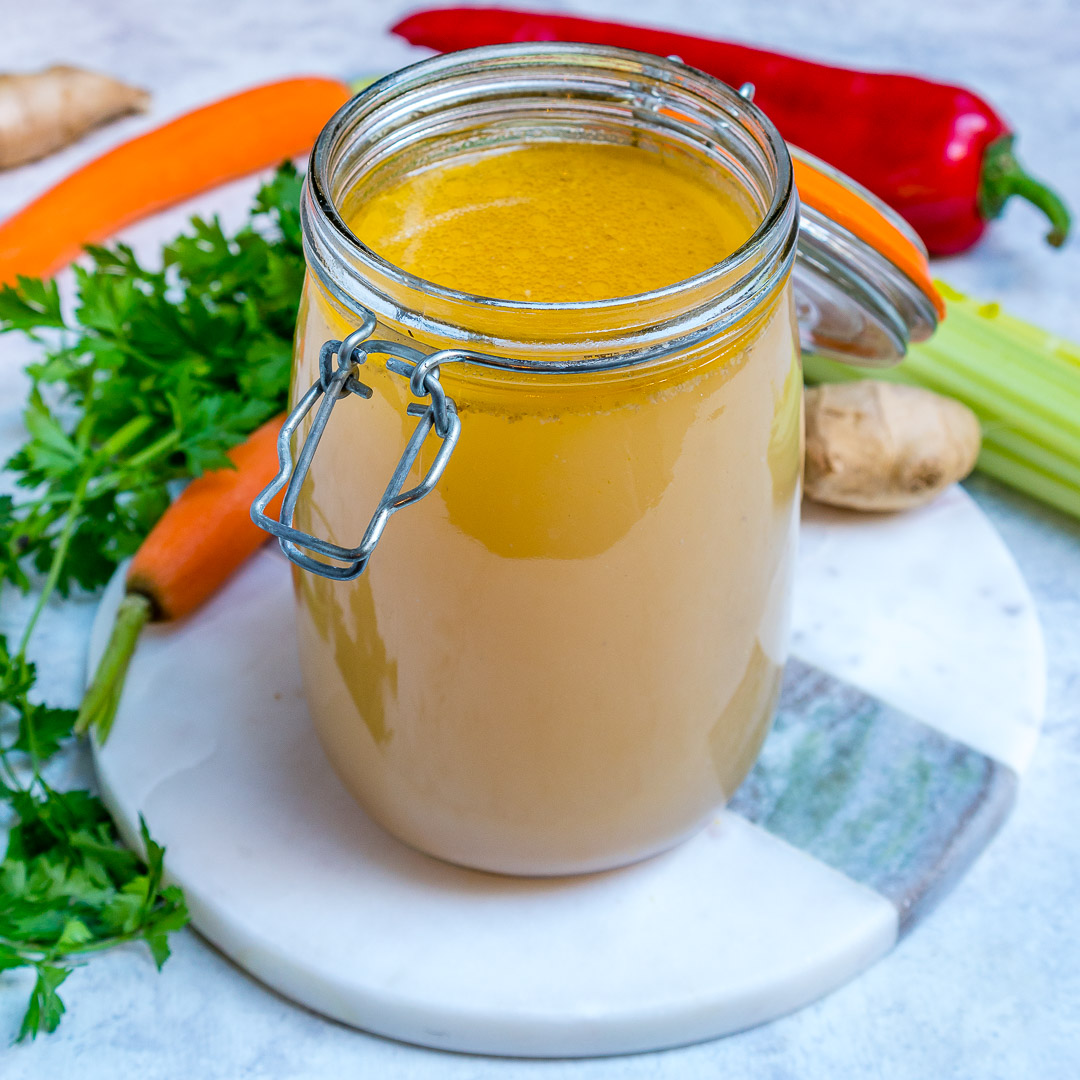Bone broth has become a popular food in the health and nutrition industry for a few years now. You may have heard about it, yet might not understand exactly what it is or why it may be good for you.
This article will explain what makes it different from traditional broth, discuss its health benefits, and give you a delicious recipe so that you can start using it yourself!
What is Bone Broth?
Bone broth is a type of liquid broth made by simmering bones in water along with seasonings, herbs and vegetables for multiple hours. In comparison, traditional broth is made in a similar way, but without the use of bones in the mixture and for a shorter period of time.
Even though it seems like it’s a new fad, bone broth has actually been around for centuries. Hunter-gatherers used to use otherwise inedible parts of the animals that they harvested and turn them into a broth that they could drink. Bone broth can be made using bones from just about any animal, and things like feet and connective tissue can be used in the process as well.
 Slow Cooker Homemade Bone Broth to Lower Inflammation and Heal Your Gut
Slow Cooker Homemade Bone Broth to Lower Inflammation and Heal Your Gut
Benefits of Bone Broth
There are many health benefits associated with bone broth. Most people have memories of eating chicken soup as a young child when they were sick, and while that has been a remedy for illness for hundreds of years, the healing effect of chicken soup stems from the nourishing properties of bone broth.

Some of its health benefits include:
- Highly nutritious– animal bones and connective tissue contain an important protein called collagen, and one cup of bone broth can provide about 9 grams of high quality protein. Collagen is highly nutritious, and you can read more about its benefits here. In addition, bone broth can contain a variety of minerals like calcium, magnesium and phosphorus as well as B vitamins and other nutrients, depending on how it is made.
- Supports gut health– bone broth contains the important amino acid glutamine, which is essential for nourishing the gut lining. Combined with collagen, glutamine in bone broth can help repair damaged intestinal linings that may be causing digestive problems or difficulty absorbing nutrients.
- Good for joint health– bone broth also contains the proteins glucosamine and chondroitin which have been shown by many studies to support healthy tissue in joints, and reduce joint pain in athletes, those with osteoarthritis, and more.
How to Make Homemade Bone Broth
Bone broth can be purchased in stores, yet its quality is not always known when it comes in this way. Making your own is an excellent way to ensure the highest quality and nutritional value. The best part is it’s fairly simple and inexpensive to do so! While the process does take multiple hours, it is mostly hands-off time and can be done while away from home. The end product is nourishing and delicious!
Here’s a great recipe for Homemade Bone Broth:
Ingredients
- 1 whole chicken*, bones included
- 1 onion, diced
- 2 whole carrots, peeled and diced
- 3 stalks celery, diced
- 1 zucchini, diced
- 3-4 cloves of finely chopped garlic, or 2 tsp pre-minced garlic
- 1 Tbsp apple cider vinegar
- 2 Tbsp fresh herbs such as rosemary
- Dash of turmeric powder
- Sea salt & freshly ground black pepper to taste
- 4 quarts of water
- *Other animals can be used based on preference, including turkey, lamb or beef on the bone.
Instructions
- Season the chicken using fresh herbs, sea salt & pepper and place into a large stockpot.
- Add diced vegetables, garlic, turmeric powder, and apple cider vinegar to the pot.
- Fill the stockpot with enough filtered water to about ¾ of the way full.
- Bring to a boil, then reduce heat to low and simmer, covered, for about 2 hours or until the meat of the chicken is cooked through and no longer pink.
- Remove the whole chicken from the pot and allow it to cool enough to handle. Remove any skin, and gently shred the meat off the bones. Set the meat aside and save it for a variety of other uses.
- Return the bones and any connected cartilage to the stockpot with the partially cooked veggies, seasonings and water. Continue simmering on low for an additional 6-8 hours, or up to 24 hours. Broth should be very fragrant.
- Remove the pot from heat and allow it to cool. Strain the broth through a fine mesh strainer, and reserve the vegetables for other uses, such as for soup.
- Store the bone broth in glass jars with lids in the refrigerator for up to 5 days, or in freezer bags for months.
Ideas for Using Bone Broth Include:
- In place of water when cooking rice, quinoa or other grains
- Sauteing or steaming vegetables
- As part of sauces
- As a base for soups and stews
- Drinking it plain, warmed in a mug
In Summary
Bone broth contains protein, nutrients and important compounds like collagen that are not present in traditional broth, making it a superior product. It has many health benefits associated with it and can easily be added to just about anyone’s diet.

from Clean Food Crush https://ift.tt/3glaJjW





No comments:
Post a Comment